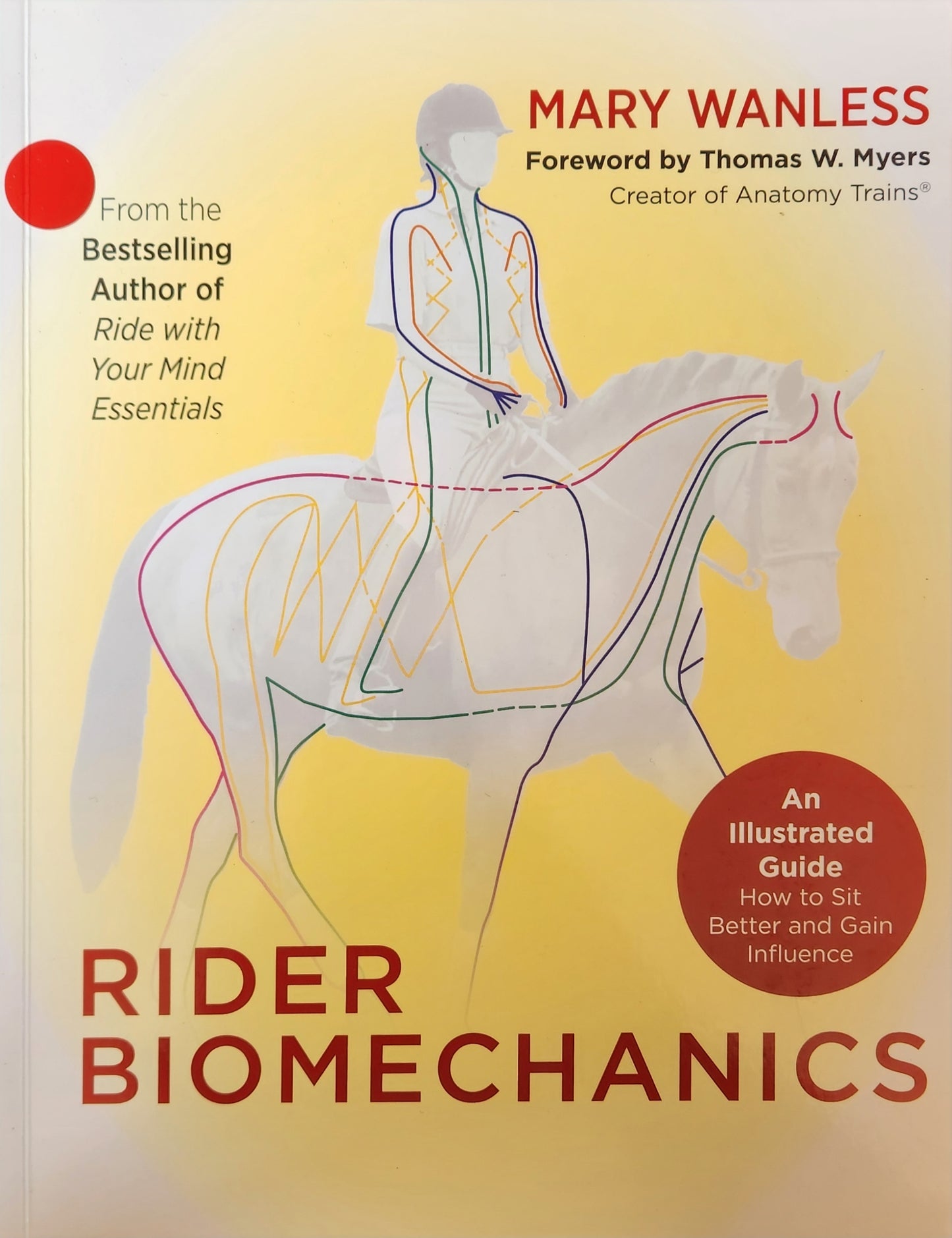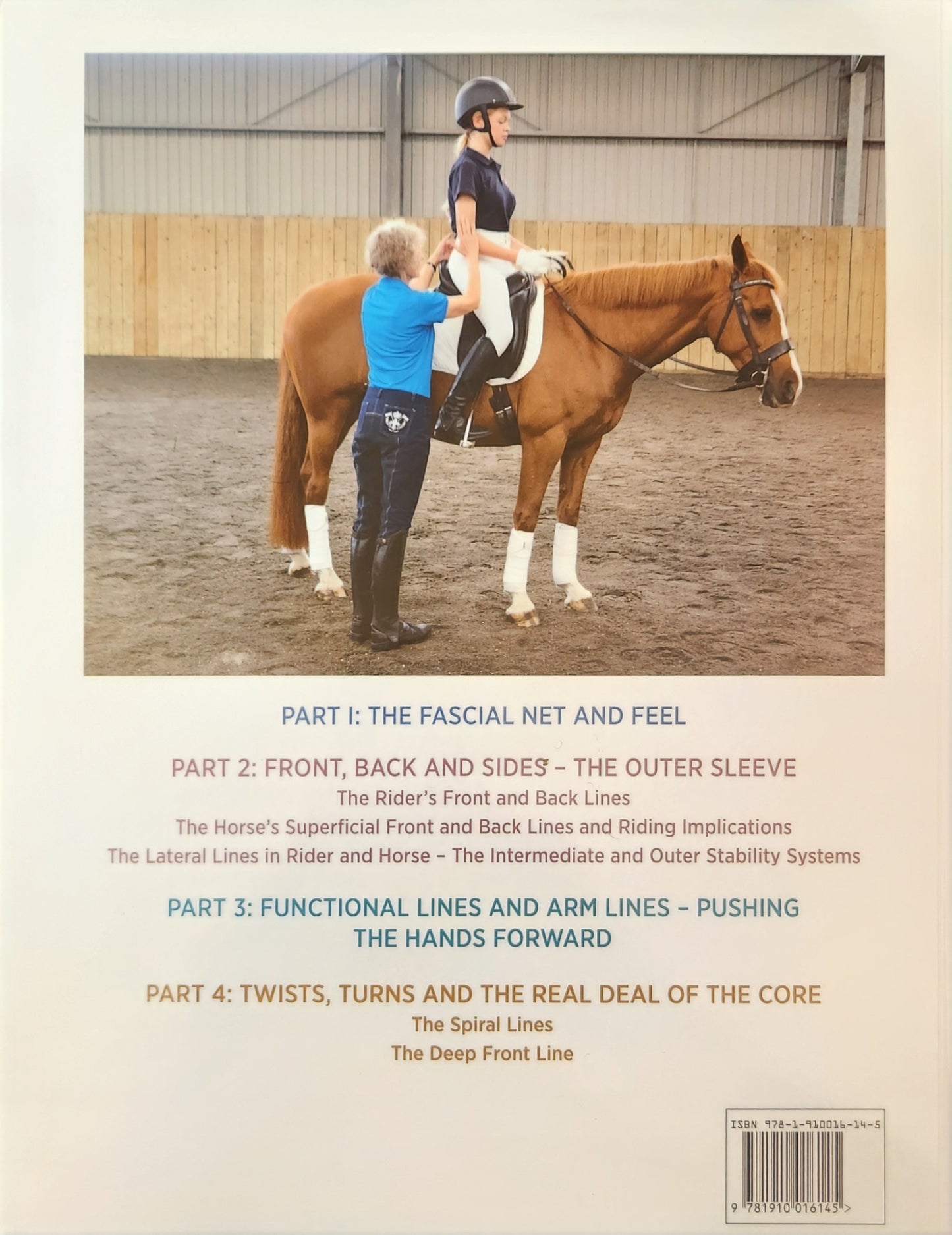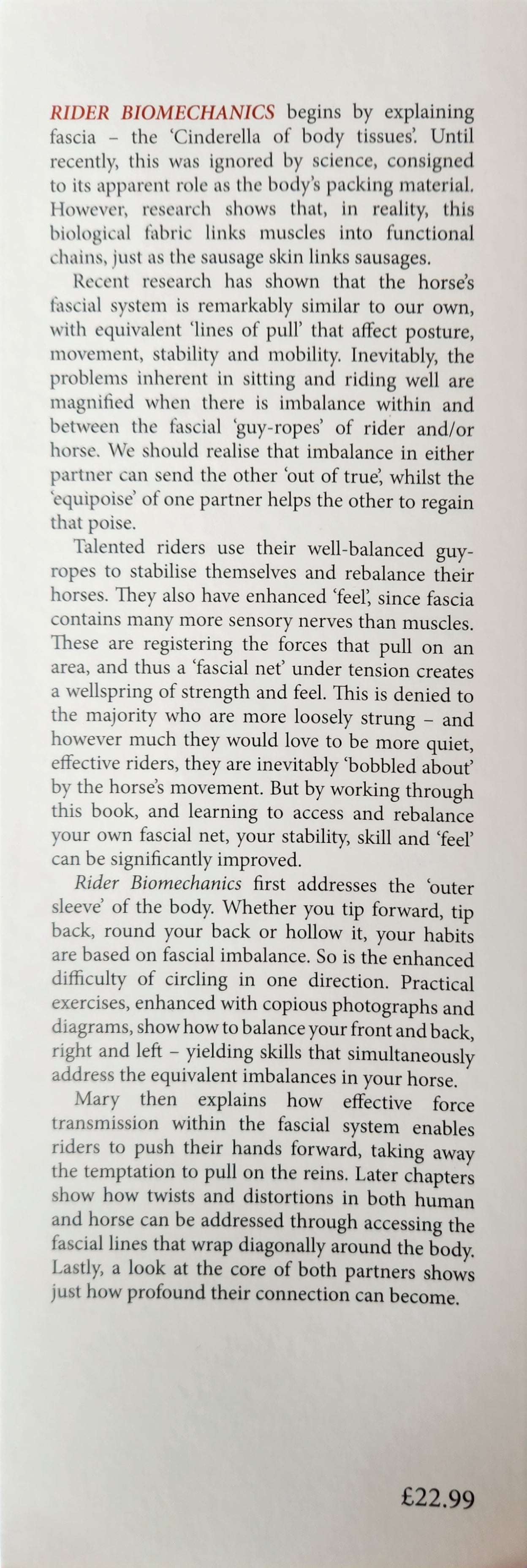Mangaiti Equine Books
Rider Biomechanics
Rider Biomechanics
Couldn't load pickup availability
Mary Wanless
RIDER BIOMECHANICS begins by explaining fascia -the Cinderella of body tissues. Until recently, this was ignored by science,consigned to its apparent role as the body's packing material.
However, research shows that, in reality, this biological fabric links muscles into functional chains, just as the sausage skin links sausages. Recent research has shown that the horse's fascial system is remarkably similar to our own, wit h equivalent 'lines of pull' that affect posture, movement, stability and mobility.
Inevitably, the problems inherent in sitting and riding well are magnified when there is imbalance within and between the fascial "'guy-ropes' of rider and/or horse. We should realise that imbalance in either partner can send the other 'out of true', whilst the equipoise' of one partner helps the other to regain that poise.
Talented riders use their well-balanced guy-ropes to stabilise themselves and rebalance their horses. They also have enhanced feel, since fascia contains many more sensory nerves than muscles. These are registering the forces that pull on an area, and thus a `fascial net under tension creates a wellspring of strength and feel. This is denied to the majority who are more loosely strung - and however much they would love to be more quiet, effective riders, they are inevitably 'bobbled about' by the horse's movement. But by working through this book, and learning to access and rebalance your own fascial net, your stability, skill and feel' can be significantly improved.
Rider Biomechanics first addresses the 'outer sleeve' of the body. Whether you tip forward, tip back, round your back or hollow it, your habits a re based on fascial imbalance. So is the enhanced difficulty of circling in one direction. Practical exercises, enhanced with copious photographs and diagrams, show how to balance your front and back, right and left - yielding skills that simultaneously address the equivalent imbalances in your horse.
Mary then explains how effective force transmission within the fascial system enables riders to push their hands forward, taking away the temptation to pull on the reins. Later chapters show how twists and distortions in both human and horse can be addressed through accessing the fascial lines that wrap diagonally around the body.
Lastly, a look at the core of both partners shows just how profound their connection can become.
Condition: paperback, new







